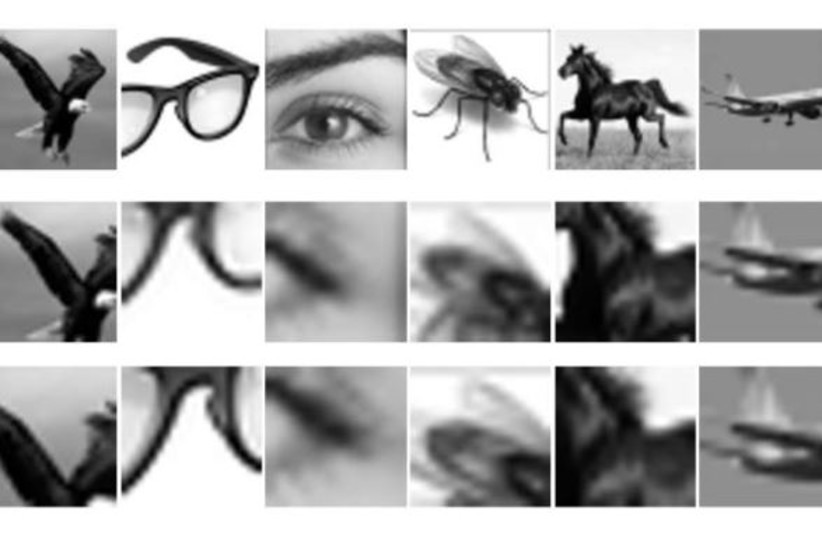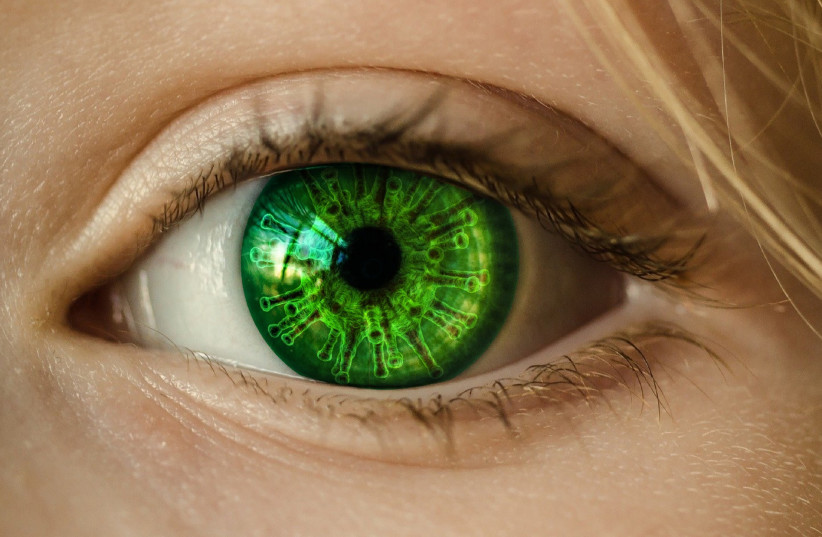Can a computer recognize blurry objects? - study
The researchers recorded the eye movements of people attempting to recognize blurred objects and, using a computational model, simulated the resulting activities of neurons in the retina.
“Seeing eye to eye” is an expression of harmony, but do different people literally see the same thing when they view the same external world? “The short answer is no,” according to Dr. Liron Gruber and Prof. Ehud Ahissar of the brain sciences department of the Weizmann Institute of Science in Rehovot. “Even the same person sees the same thing differently each time they look at it.”
They reached these conclusions after conducting a study in which they investigated intriguing discrepancies between human and computer vision that had been uncovered by Weizmann mathematicians. Those researchers, headed by Prof. Shimon Ullman of the computer science and applied mathematics department, found that a computer algorithm – no matter how clever – was much worse than humans at interpreting image fragments known as minimally recognizable configurations (MIRCs) that recognize from which objects these fragments had been derived.
When the researchers gradually cropped or blurred the MIRCs, recognition by the computer decreased in a linear fashion, but among human participants it dropped abruptly at a certain cut-off point. Gruber realized that experiments involving MIRCs could provide a wealth of data about the workings of the human visual system.
They said that these findings represent a new direction in the search for the neural code – that is, how information is encoded in the brain – which, unlike the ubiquitous genetic code, probably varies from one brain region to another. The findings show that the retinal code results from a dynamic process in which the brain interacts with the external reality it encounters though the senses.
Recognizing a blurred object
 |
Moreover, when the researchers gradually cropped or blurred the MIRCs, recognition by the computer decreased in a linear fashion, whereas among human participants it dropped abruptly at a certain cut-off point (bottom row). (credit: COURTESY WEITZMAN INSTITUTE OF SCIENCE) |
How computers learn to recognize objects instantly
In an earlier study, she and Ahissar, her doctoral advisor, had already shown that contrary to the widely accepted view, the human eye doesn’t work like a camera that takes passive snapshots. In the new study, the two of them teamed up with computer scientist Ullman to put human vision to the test.
Identifying MIRCs typically takes people a relatively long time – more than two seconds, which is more than six times longer than the 300 or so milliseconds needed to recognize whole objects. The researchers recorded the eye movements of people attempting to recognize MIRCs and, using a computational model, simulated the resulting activities of neurons in the retina. These activity patterns varied not only with different eye movements; they differed depending on whether or not people managed to recognize the object in the picture. On average, recognition took four sets of scanning by the eyes of different points in the picture, and at each point, the eyes drifted locally in all directions for several hundred milliseconds, they reported.
“The eyes of different people follow different paths when viewing the same thing, and even the eyes of the same person never copy the same trajectory, so in a way, each time we look at something, it’s a one-off experience,” the Weizmann scientists added.
The results showed that the interactions between eye movements and the object are critical to recognition. In fact, when the researchers canceled out the interactions between the objects and the eye movements – for example, by moving the pictures in step with the eyes – study participants failed to recognize the objects.
“The retina doesn’t create copies of the outside world – unlike a camera, which reproduces external patterns on film or digitally. Rather, human vision is an active process that involves interactions between the external objects and eye movements,” Ahissar explained. “The eyes of different people follow different paths when viewing the same thing, and even the eyes of the same person never copy the same trajectory, so in a way, each time we look at something, it’s a one-off experience.”
So how does the brain encode visual reality and how does this encoding result from the interactions between the eye movements and the object? “When we look at an object or scene, the light picked up by each receptor in the retina changes in intensity with every eye movement. The resultant patterns of neuronal activity can be interpreted and perhaps stored by the brain,” Gruber concluded.
How we teach computers to understand pictures
PLEASE RECOMMEND THIS PAGE & FOLLOW THE SPUTNIKS ORBIT AT HTTPS://DISQUS.COM/HOME/FORUM/THESPUTNIKSORBIT-BLOGSPOT-COM



No comments:
Post a Comment